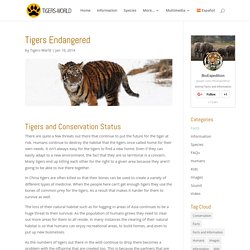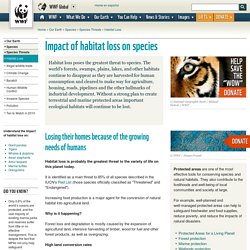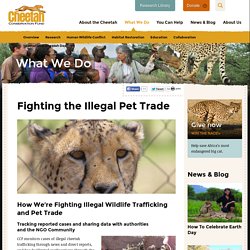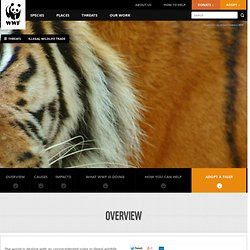

Tigers Endangered - Tiger Facts and Information. There are quite a few threats out there that continue to put the future for the tiger at risk.

Humans continue to destroy the habitat that the tigers once called home for their own needs. It isn’t always easy for the tigers to find a new home. Even if they can easily adapt to a new environment, the fact that they are so territorial is a concern. Many tigers end up killing each other for the right to a given area because they aren’t going to be able to live there together. In China tigers are often killed so that their bones can be used to create a variety of different types of medicine.
The loss of their natural habitat such as for logging in areas of Asia continues to be a huge threat to their survival. As the numbers of tigers out there in the wild continue to drop there becomes a problem with the offspring that are created too. It is very important to understand the vital role that the tiger plays in the ecosystem out there. Impact of habitat loss on species. Habitat loss is probably the greatest threat to the variety of life on this planet today.

It is identified as a main threat to 85% of all species described in the IUCN's Red List (those species officially classified as "Threatened" and "Endangered"). Increasing food production is a major agent for the conversion of natural habitat into agricultural land. Why is it happening? Forest loss and degradation is mostly caused by the expansion of agricultural land, intensive harvesting of timber, wood for fuel and other forest products, as well as overgrazing. High land conversion rates The net loss in global forest area during the 1990s was about 94 million ha (equivalent to 2.4% of total forests).
Around half of the world's original forests have disappeared, and they are still being removed at a rate 10x higher than any possible level of regrowth. Impact of habitat loss on species. Fighting the Illegal Pet Trade : Cheetah Conservation Fund. How We’re Fighting Illegal Wildlife Trafficking and Pet Trade Tracking reported cases and sharing data with authorities and the NGO Community CCF monitors cases of illegal cheetah trafficking through news and direct reports, and has facilitated confiscations through the proper authorities whenever possible.

Although geographically widespread, most of these reports involve the Middle East and the Horn of Africa. Based on reports compiled by CCF, 74 cheetah cubs were reportedly taken for the illegal trade in 2011. In 2012, CCF learned of 116 cheetahs. Advocating in stakeholder meetings to ensure live trade issues are addressed in anti-wildlife trafficking efforts CCF staff tracks the activity of international agencies and governments on this issue and attends stakeholder meetings when and where possible. Opening dialogue in destination countries to address health and well-being of cheetahs caught up in the trade, and potentially reduce demand. CCF’s Executive Director, Dr. What you can do. Stop Illegal Wildlife Trade. Each year, hundreds of millions of animals are caught from the wild and then sold as food, pets, accessories, souvenirs and medicine.

As Asia grows richer, more and more people have the means to purchase illegal products from species such as elephants and rhinos for medicinal purposes or as a representation of enhanced wealth and status. This is bringing about an unprecedented spike in illegal wildlife trade across the world and it may well overturn decades of conservation success, especially for key species like rhinos, elephants and tigers. Illegal wildlife trade is the 4th most profitable illegal business behind behind drugs, human trafficking and counterfeits. Criminals involved in illegal wildlife trade are distributing firearms, intimidating communities, and bribing officials to achieve their goals. The business has grown exponentially and is now an international organised crime network run by trafficking syndicates, compromising international security. Unsustainable and illegal wildlife trade. What is wildlife trade?

Whenever people sell or exchange wild animal and plant resources, this is wildlife trade. It can involve live animals and plants or all kinds of wild animal and plant products. Wildlife trade is easiest to track when it is from one country to another because it must be checked, and often recorded, at Customs checkpoints. Why do people trade wildlife? People trade wildlife for cash or exchange it for other useful objects - for example, utensils in exchange for wild animal skins. For a more detailed list of the various uses of wildlife, visit the TRAFFIC website.
Illegal Wildlife Trade. The world is dealing with an unprecedented spike in illegal wildlife trade, threatening to overturn decades of conservation gains.

Ivory estimated to weigh more than 23 metric tons—a figure that represents 2,500 elephants—was seized in the 13 largest seizures of illegal ivory in 2011. Poaching threatens the last of our wild tigers that number as few as 3,200. Wildlife crime is a big business. Run by dangerous international networks, wildlife and animal parts are trafficked much like illegal drugs and arms.